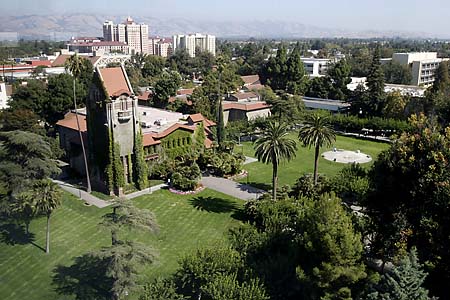SJSU and the Great Feature Hunt

Shooting for San Jose State's Spartan Daily for just over three weeks now, I have found shooting features and wild art to be one of the more difficult tasks. Limited by the size of the campus, shots that have been taken every year, and attitude that feature art is simply space filler to be taken at a moments notice, I have struggled to find fresh ways to view the campus and campus life. Photojournalism professor Dennis Dunleavy addresses feature photography on a recent post in his blog:
There is a tendency to see the function of features as something to fill space. I think this perception is pervasive and misses the mark for setting high journalistic standards...
When editors say they need features, it generally means that they have no clue about what is going on in their backyard. When someone says they need features it means that they are afraid they won’t have enough words or images to fill the paper. This is the “fall-back and punt” approach to doing journalism; honestly, it is not journalism...
Since the chance of editors and reporters thinking visually ahead is rather slim, this burden falls on the photographer’s shoulders. The photojournalist must do his or her homework and stay on top of what is going on in the community.
In an earlier post, he states "I am now making a commitment to referring to such efforts and images as 'stories' rather than as 'feature art.' The goal is to encourage students to engage in their community and to visually put the "interest" back into "human interest" stories. In doing community journalism, I believe, every effort, every image and every word should tell a story of human interest and import."
Professor Dunleavy suggests:
- Keep a log of everything that pops into your head that may make a meaningful image of your community. Look at the list every day.
- Make a list of contacts on campus or in the community of people that are doing interesting and good deeds. Call them from time to time.
- Read, read and read. Read everything about what is going on in your community. Look at bulletin boards, bumperstickers, post-it notes, read the classified section, talk to people, hang out in the same spot every day for a week and watch what is going on. Follow the news. Read your newspaper.
- Do journalism.
Professor Dunleavy is correct in that we should be striving for good journalism and not simply space filler. However, there is little chance that editors will stop calling on photographers to find features in an hour because a story fell through. Instead, the Spartan Daily staff is taking what some have suggested, writing down future feature ideas down in a book, and keeping an idea wall of possible features and photo stories that we hope will help students to learn more about the campus that they are on for most of the week.



